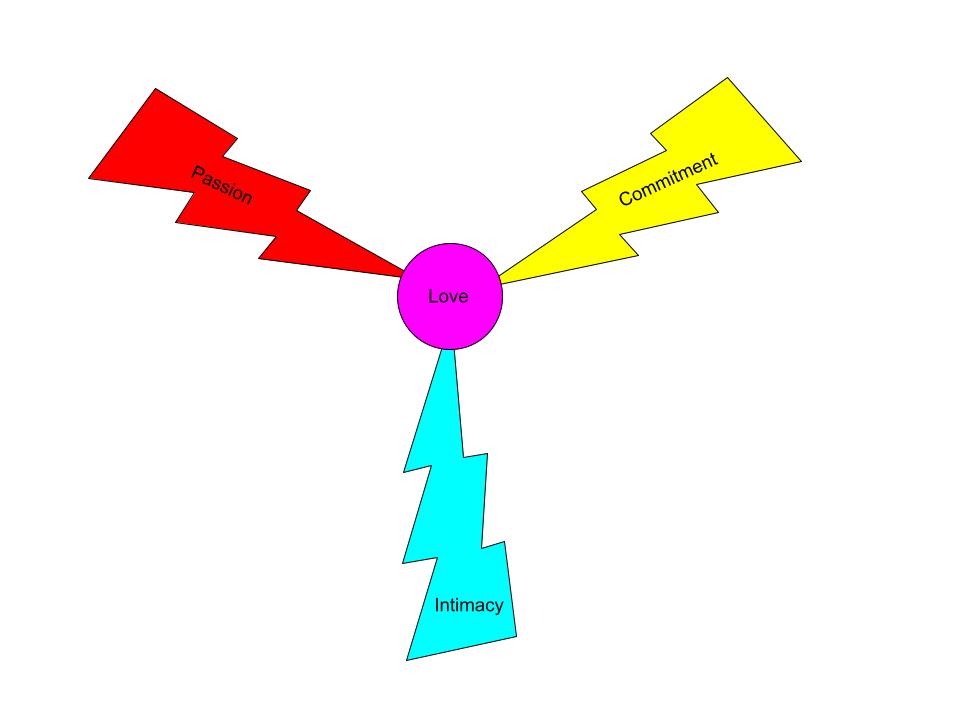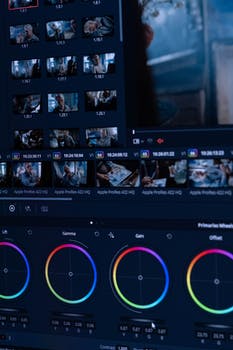Hi everyone,
Introduction
I decided to split my ePortfolio post into three major sections using horizontal lines. Notice that each “Section” contains a student “Activity” followed by a respective educational analysis as indicated by “Educator Review”.
The “Activity” and “Educator Review” sub-headings will help you to differentiate between the activities designed for students and the analyses designed for educator review and study. Each respective “Educator Review” section contains educational principles and explanations in accordance with my revisions.
Section 1
Activity 1: Psychology of Love
Learning Outcome
Students will effectively explore Sternberg’s Triangular Theory of Love.
Activity Summary
Beginning in Week 1, students will begin the process of understanding Sternberg’s Triangular Theory of Love and will provide a 300 word forum post by the end of Week 2.
Outline
Please read Ch. 7 “Interpersonal Attraction and Close Relationships” from the provided Baron & Branscombe (2017) textbook and then actively examine the provided Triangular Theory of Love graphic below:
According to Sternberg’s Triangular Theory of Love, love consists of a combination of passion, intimacy, and commitment.
(1) As you examine the provided graphic displaying Sternberg’s Triangular Theory of Love keep in mind the importance of connections between passion, intimacy, and commitment.
(2) After reading Ch. 7 and viewing the provided graphic for Sternberg’s Triangular Theory of Love, answer these questions:
(a) Does Sternberg’s theory of love emphasize a triarchic theory or a triune theory?
(b) Do you agree with Sternberg that love is composed of passion, intimacy, and commitment? Why or why not?
(c) Have you ever experienced passion, intimacy, or commitment in your life? If so, how did it make you feel? If not, how might you discover the meaning of passion, intimacy, and commitment in your life?
Using either a provided school computer or a personal computer, please write your answers in Microsoft Word and upload your answers to the Moodle forum or you write your answers directly in the forum.
Please submit Learning Activity 1 to your Open Learning Faculty Member for grading by the end of Week 2.
Educator Review : Analyzing my Graphic
For my first ePortfolio media piece, I chose to remix and refine my graphic from Week 5 and 6 based on the feedback from my open learning faculty member.
This is my original non-interactive graphic which was slightly too small and harder to read:

I decided to use Google Drawing as my graphic design tool due to its ease of functionality. I also decided to use H5P to turn my original graphic into an interactive graphic. I decided to create refine my pre-existing graphic from Week 5 & 6 since I had a desire to implement Professor Webster’s recommendations.
Based on the feedback provided by Keith Webster, I needed to re-design my original graphics by creating a larger three-pronged lightning strike and larger font. I focused on making each of the lightning bolts larger, making my font larger, making my font bold for ease of readability, and adding a heart shape in the middle of my graphic rather than a circle shape. I also decided to include alternative text and an appropriate caption for accessibility purposes.
Below is my revised interactive psychology graphic:
According to Sternberg’s Triangular Theory of Love, love consists of a combination of passion, intimacy, and commitment.
My updated and revised graphic would serve as a supplement to Branscombe & Baron’s (2017) “Social Psychology”. My updated graphic would help students visualize the triune connection between passion, intimacy, and commitment which leads to love.
I feel that my graphic re-design better reinforces Mayer’s (2014) coherence principle and Clark & Lyons (2010) two-dimensional graphics since I avoided the use of extraneous images and words. By keeping my graphics simple, I was able to add visual clarity and readability thereby preventing cognitive overload (Mayer, 2014, p. 849). In implementing a 2-dimensional graphic with simple colors and font, I believe that I have increased readability, clarity, and ease-of understanding for students. Thanks to H5P, I was also able to integrate hidden definitions for students to interact with.
References
Baron, A. R., & Branscombe, R. N. (2017). Social Psychology (14th ed.). Pearson.
Clark, R. C., & Lyons, C. (2010). Graphics for learning : Proven guidelines for planning, designing, and evaluating visuals in training materials. Center for Creative Leadership.
Mayer, R. E. (2014). Multimedia instruction. In J. M. Spector, M. D. Merrill, J. Elen, & M. J. Bishop (Eds.), Handbook of research on educational communications and technology (4th ed., pp. 385-399). Springer Science & Business Media. https://doi.org/10.1007/978-1-4614-3185-5
Section 2
Activity 2: Psychology of Art, Poetry, & Literature
Learning Outcome
Students will listen and reflect upon Carl Jung’s beliefs concerning the importance of art, literature, and poetry in our lives.
Activity Summary
Beginning in Week 3 and ending in Week 4, students will conceptualize Jung’s psychological emphases of art, poetry, and literature. By the end of Week 5, students will provide a 1,000 reflection essay to their open learning faculty member.
Outline
Please read Ch. 8 “Psychology and Literature” from the provided Jung (1933) book titled “Modern Man in Search of a Soul” and then listen attentively to the provided quotations in Week 3’s devotional podcast below:
(1) As you listen to the provided audio recording from your professor, keep in mind how reading and writing have the potential to open up new avenues of thought and feeling at both the professional and personal level.
(2) After you have finished the required reading and have listened to the audio recording, answer the following questions in preparation for your essay.
(a) According to Jung (1933) what is the poet’s true work? (see p. 155-156 for reference).
(b) Do you agree with Jung’s (1933) notion that the artist does not have free will? Why or why not?
(c) Do you believe yourself to be a creative person? If so, engage in self-reflection and ask yourself which parts of your life are more creative than others. Why do you think this is?
Using a school computer or a personal computer, please submit your answers for Learning Activity 2 to your Open Learning Faculty Member in the Moodle Dropbox by the end of Week 4. Please submit your answers in either Word Document or PDF format.
In preparation for your Week 5 essay, consider using your answers from Activity 2 to help you brainstorm writing topics. Future guidance will be provided but for now, be sure to include APA 7th edition citations and referencing. You are expected to cite both the provided Jung (1933) book and the audio resource for your reflection essay.
Educator Review: Analyzing my Audio
For my second ePortfolio media piece, I chose to refine my audio recording from Activity 6 of Week 8 & 9 based on the feedback from my open learning faculty member.
Below is my original audio recording from Jung’s (1933) chapter on Literature which required greater amplification and noise reduction:
I chose to adhere to the provided “Mixing a Narration with Background Music” (Audacity, 2019) tutorial throughout this activity. I chose to use Audacity to edit and adapt my combined audio piece.
Based on the feedback from Keith Webster, I needed to ensure that I amplified my voice so that I was not being drowned out by my fade-in and fade-out effects or by the intermission music that I included. I began my refinements of my audio recording my selecting the Amplify effect and boosting my voice by approximately 10 decibels for each of my narrated sections.
I used the Noise Reduction effect to reduce “constant background sounds such as hum, whistle, whine, buzz, and ‘hiss’, such as tape hiss, [or] fan noise” (Audacity, 2021). I chose to filter out noise in 2 decibel increments until the overall audio recording gained audible clarity without negatively affecting my narrated sections. I feel that my refined version of my Carl Jung devotional is an improvement on my original recording and that I responded effectively to my open learning faculty members recommendations.
Below is my amplified and noise reduced version of my audio recording from Jung’s (1933) chapter on literature:
My revised audio piece would effectively allow students to learn essential quotes from Jung’s books without requiring students to read the entirety of his books. The inclusion of audio narration allows me as an educator to provide students with the lessons essential to completion of specific learning outcomes. My updated audio piece will therefore help students reflect upon their own lives and determine how art, poetry, and literature also influence them at a personal level.
I feel that my audio design reflects Webster’s (2022) conversational style of narrative while also including a transcript for those with different hearing abilities. My audio design also effectively adheres to Carter’s (2012) dramatic and poetic approach to audio design since I primarily focused on creating an intense and dramatic voice inflection to go along with my soothing instrumental music choice (p. 55).
References
Audacity. (2019). Tutorial: Mixing a narration with background music. https://manual.audacityteam.org/man/tutorial_mixing_a_narration_with_background_music.html
Audacity. (2021). Tutorial: Noise Reduction. https://manual.audacityteam.org/man/noise_reduction.html
Carter, C. W. (2012, October 26). Instructional audio guidelines: Four design principles to consider for every instructional audio design effort. Techtrends: Linking Research & Practice to Improve Learning, 56(6), 54–58. https://doi.org/10.1007/s11528-012-0615-z
Jung, C. G. (1933). Modern Man in Search of a Soul. Harcourt.
Section 3
Activity 3: Psychology of Feeling – Lowen’s Mind-Body Link
Learning Outcome
Students will learn how the human body produces bodily sensations of heaviness and lightness and how we interpret our bodily sensations as feelings.
Activity Summary
Beginning in Week 6, students will begin an exploration of Alexander Lowen’s mind-body link and will answer questions in preparation for a 2-4 video assignment which is due by the end of Week 7.
Outline
Please read Darley and Batson’s (1973) “From Jerusalem to Jericho: A Study of Situational and Dispositional Variables in Helping Behavior” in Aronson and Aronson’s (2012) “Readings About the Social Animal” (11th ed.) and watch the provided Mind-Body Link video below:
(1) As you watch the provided video, keep in mind how thoughts interact with bodily feelings and how bodily sensations also interact with thoughts.
(2) After you have completed the required reading and have watched and responded to the video, answer the following questions:
(a) According to Darley and Batson (1973) what is the difference between a situational variable and a dispositional variable? (as cited in Aronson & Aronson, 2012).
(b) What are the three types of religiosity? (see Darley & Batson, 1973, as cited in Aronson & Aronson, 2012, p. 44).
(c) Do you believe yourself to be a caring person? Have there every been events in your life where you situationally or due to your disposition have avoided helping someone in need? If so, reflect on your reasoning and feelings at the time and how your view of your self has changed on account of your reflection.
Using a school computer or a personal computer, please submit your answers for Learning Activity 3 to your Open Learning Faculty Member in the Moodle Dropbox by the end of Week 6. Please submit your answers in either Word Document or PDF format. The feedback your instructor will provide you for Activity 3 will provide you with ample guidance for your video activity.
For example, once you have answered the Activity 3 preliminary questions and have received guidance from your instructor, begin the process of brainstorming possible emotions or feelings which you would like to physically display for your video assignment which is due at the end of Week 7.
You are free to use a cellphone, tablet, webcam, or any other video recording device to record your physical displays of feelings. I recommend that you use either Openshot or Shotcut to edit your videos before submitting them for grading.
It is expected that you will physically display between 3-4 emotions or feelings in your video. For example, if you choose to physically display anger, you might choose to record yourself striking a punching bag whereas if you choose to physically display compassion, you might choose to record yourself bending down to pick up a crying baby (i.e., you might choose to use a doll as a prop).
Educator Review: Analyzing my Video
For my third ePortfolio media piece, I chose to remix and refine my video recording Activity 3 of Week 10 and 11 based on the feedback from my open learning faculty member.
Below is my original mind-body link video which was slightly blurry and recorded in one-take. My original video was drawn without markers, did not include Shotcut editing, and did not have a pre-written script:
Therefore, based on the feedback I received from Keith Webster, I wanted to create a revised video where all of my information pertaining to Lowen’s mind-body link was presented in a more linear fashion.
For my revised video, I intentionally chose to plan the spacing of my document. I chose to use different colored markers rather than only a blue pen since I wanted to create a bolder font throughout my video. I also made sure that I had my phones ‘steady cam’ feature enabled before recording. I also included many different transitions throughout my revised video since I did not want to record my video in one single take. I also wrote a pre-written script for my revised video.
Below is my updated Mind-Body Link video which includes clear video, my use of felt markers, Shotcut editing, video transitions, and scripted narration:
My revised video piece allows my students to learn through a combination of visual and auditory channels. Extending my students learning opportunities through the implementation of video resources allows me to enunciate key psychological concepts while adding my own self-reflective questions.
I chose to refine my Udacity Style Tablet Capture maintaining a first-person perspective (Hansch et al, 2015, p. 21, as cited in Woolift, 2015, p. 14; Mayer & Fiorella, 2020) because it helped to reinforce Mayer’s (2020) dynamic drawing principle. Mayer’s dynamic drawing principle argues that students learn better when they see their teachers writing rather than seeing writing which is disembodied from a hand (p. 843). I recorded my video through my cellphone, edited my video using Shotcut, and later added my audio narration through my use of Screencast-O-Matic. I also included a transcript for accessibility purposes.
Since my revised video better combines video elements with audio elements, I was able to ensure that I applied Robbins and Aydele’s (2009) and Wilson’s (2002) embodiment theory. Embodiment theory is important to me as an educator since it argues that students think and learn with their body. Once I understood that students learn with their mind and body, it became important for me to create a video resource in the first-person perspective so that students feel that they are greater vicarious participants in their learning tasks (as cited in Mayer, 2020, p. 847).
References
Lowen, A. (2013). Love, Sex, and Your Heart. Simon and Shuster.
Mayer, R. E., Fiorella, L., & Stull, A. (2020). Five ways to increase the effectiveness of instructional video. Educational Technology Research & Development, 68(3), 837–852.
https://ezproxy.tru.ca/login?url=https://search.ebscohost.com/login.aspx?direct=true&db=a9h&AN=143677118&site=ehost-live
Woolfit, Z. (2015). The effective use of video in higher education (Rep.). Retrieved October 2, 2018, from https://www.inholland.nl/media/10230/the-effective-use-of-video-in-higher-education-woolfitt-october-2015.pdf
Thanks for viewing my completed ePortfolio!
Carson 🙂










